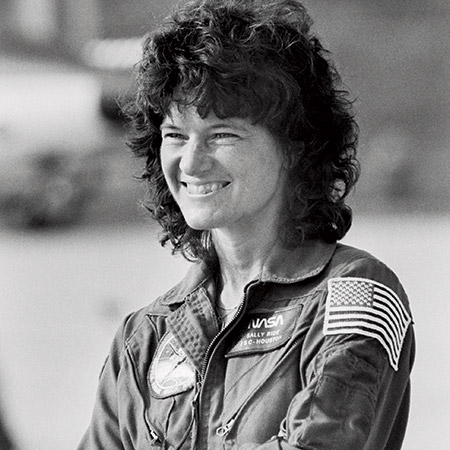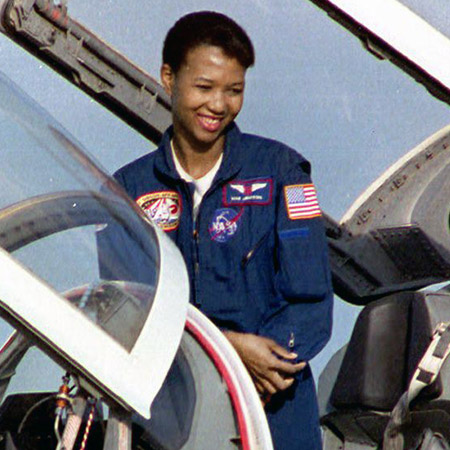This Mom Was 55 Years Old When She Decided She Wanted to Go Into Space
It's a bird! It's a plane! It's MJ Marggraff!

Photo: Lily Dong
In 2003, Mary Jo "MJ" Marggraff was a 47-year-old California mother of two whose life was devoted to school committees and car pool schedules. But after losing her trusty day planner and buying a new one, she had a revelation: "It was a blank slate," says Marggraff, now 61. "What else could I fill it with?" Soon she was reminiscing about her childhood love of flying, and next thing she knew, she was enrolling in flight school. "In my first class, all the students were single men half my age," she says. "I felt like a housemother crashing a fraternity—but I loved it too much to walk away."
Marggraff earned her first pilot's license in 2005. Six years and four additional licenses later, her obsession with being airborne morphed into something grander: a desire to go to space. To move closer to her starry dreams, Marggraff got a part-time gig as a mission support representative at Virgin Galactic, Richard Branson's commercial space line. In that role, she attends space-related gatherings where she educates people about the future of cosmic voyages. Though celestial tourism isn't quite a reality yet, Marggraff has already begun suborbital space training in anticipation of being on one of Virgin's early flights. "I've completed acceleration force exercises," she says, "which require getting inside a centrifuge, spinning around at a simulated 2,500 miles per hour, and trying not to black out. The velocity makes it feel like a car is parked on top of you."
Marggraff's training has meant more than getting her wings—it's expanded her sense of what the future may hold. "It turns out I'm capable of much more than I imagined," she says. "I used to think it'd be a miracle if I got my first license. Now I've completed nearly 1,000 hours of flight! I'm rotten in the kitchen and I scorch anything I iron, but if you need someone to land a plane, call me."
For more on MJ, visit target="_blank">https://mjmarggraff.com/.
Shooting Stars
Saluting a few female planetary pioneers.
February 14, 1960
The first of 19 female pilots enrolls in the Woman in Space Program, enduring the same tests (like sensory deprivation) as male astronauts. Thirteen pass and prove their worth, but NASA balks at letting the group lift off.
June 18, 1983

Sally Ride becomes the first American woman in space, treats sexist press inquiries (like what kind of makeup she'd pack for her mission) with zero gravity.
September 12, 1992

Mae Jemison, MD, becomes the first African American woman in space. One of her inspirations: Star Trek's Lieutenant Uhura. That's one small step for Trekkies, one giant leap for womankind.
Marggraff earned her first pilot's license in 2005. Six years and four additional licenses later, her obsession with being airborne morphed into something grander: a desire to go to space. To move closer to her starry dreams, Marggraff got a part-time gig as a mission support representative at Virgin Galactic, Richard Branson's commercial space line. In that role, she attends space-related gatherings where she educates people about the future of cosmic voyages. Though celestial tourism isn't quite a reality yet, Marggraff has already begun suborbital space training in anticipation of being on one of Virgin's early flights. "I've completed acceleration force exercises," she says, "which require getting inside a centrifuge, spinning around at a simulated 2,500 miles per hour, and trying not to black out. The velocity makes it feel like a car is parked on top of you."
Marggraff's training has meant more than getting her wings—it's expanded her sense of what the future may hold. "It turns out I'm capable of much more than I imagined," she says. "I used to think it'd be a miracle if I got my first license. Now I've completed nearly 1,000 hours of flight! I'm rotten in the kitchen and I scorch anything I iron, but if you need someone to land a plane, call me."
For more on MJ, visit target="_blank">https://mjmarggraff.com/.
Shooting Stars
Saluting a few female planetary pioneers.
February 14, 1960
The first of 19 female pilots enrolls in the Woman in Space Program, enduring the same tests (like sensory deprivation) as male astronauts. Thirteen pass and prove their worth, but NASA balks at letting the group lift off.
June 18, 1983

Sally Ride becomes the first American woman in space, treats sexist press inquiries (like what kind of makeup she'd pack for her mission) with zero gravity.
September 12, 1992

Mae Jemison, MD, becomes the first African American woman in space. One of her inspirations: Star Trek's Lieutenant Uhura. That's one small step for Trekkies, one giant leap for womankind.



